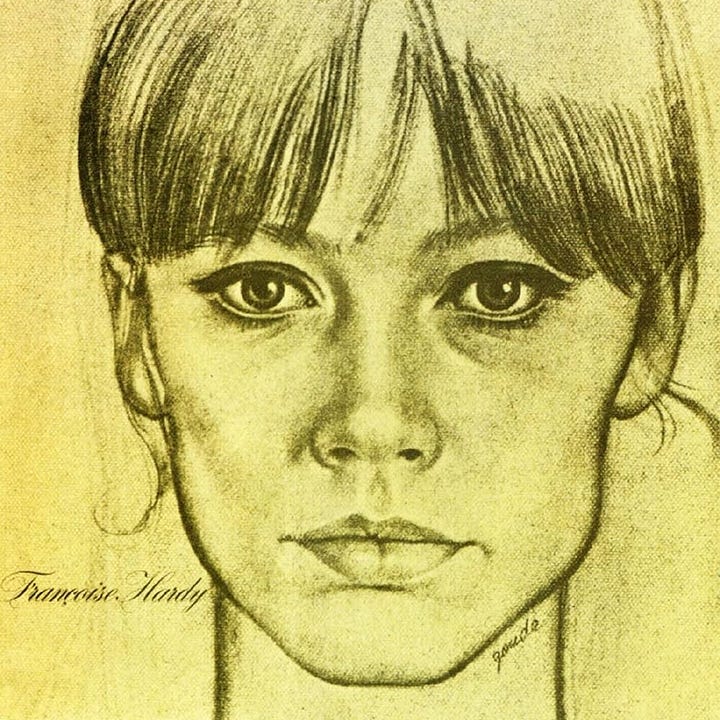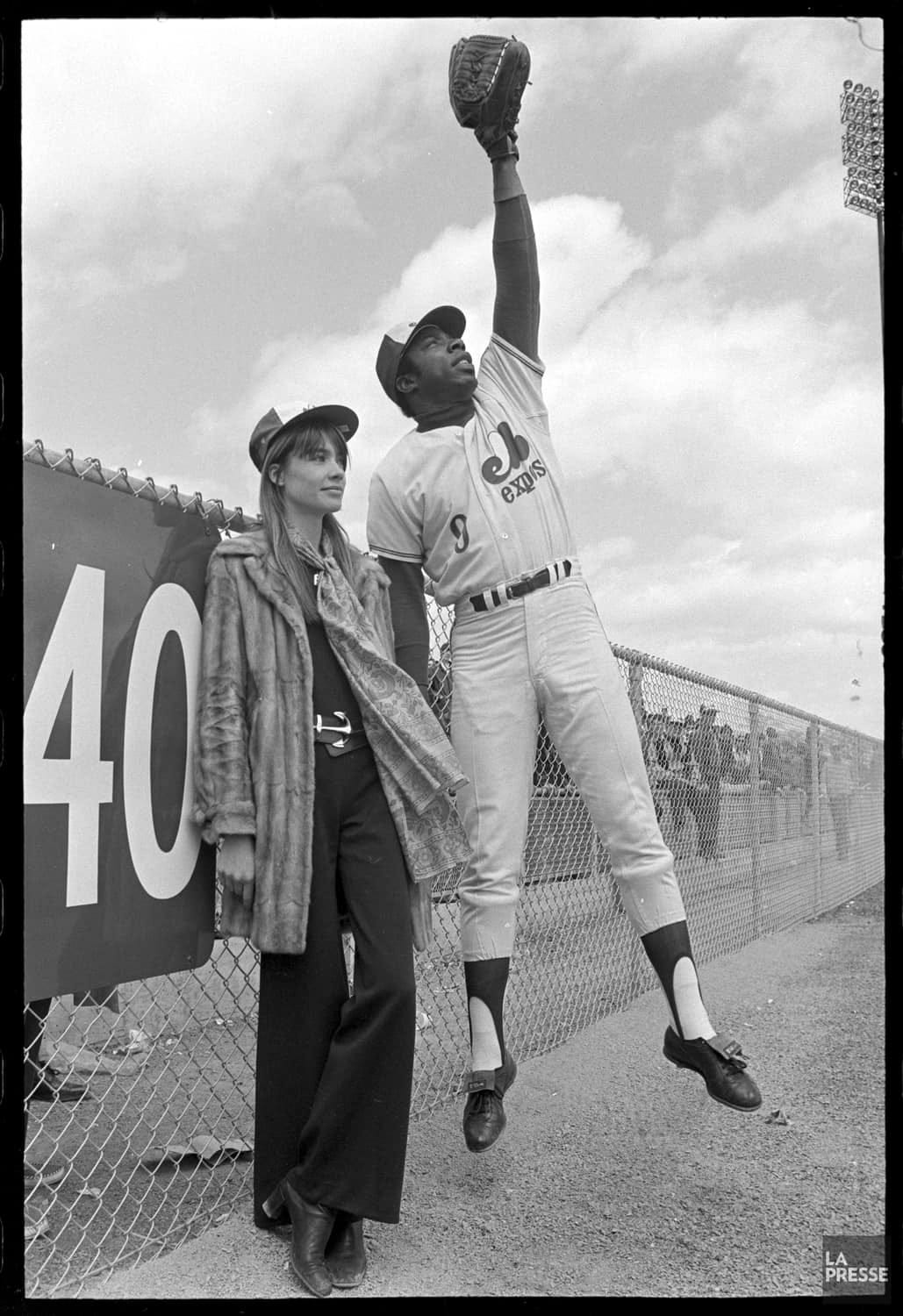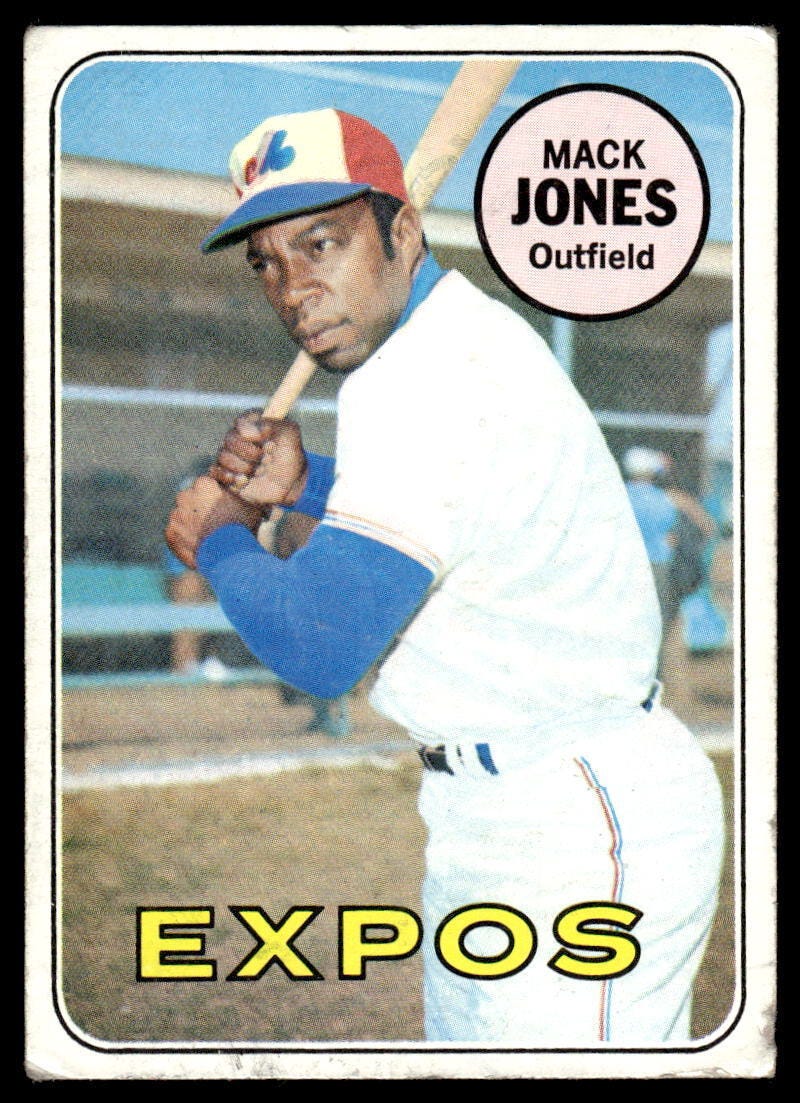

Greetings, Jagged Time Lapsers!
I’m still in a deadline hell — and a new Crossed Channels podcast episode will be up tomorrow — so I’m gonna keep today’s newsletter relatively short n’ sweet.
The legendary singer Françoise Hardy passed away last week at the age of 80 after two decades of debilitating health issues. Many tributes have been written about Hardy in the wake of her passing, but I held off — not that I don’t dig some of it, like her wonderful rendition of Serge Gainsbourg’s “L’anamour” from her 1968 LP Comment the dire adieu, but I’ve never investigated the brittle-yet-beautiful singer’s extensive catalog deeply enough to offer a meaningful opinion on it.
However…
Much as the abject soullessness of the Manfred Era has thoroughly alienated me from the current incarnation of Major League Baseball, I still can’t resist a bit of music and baseball crossover. (See, for example, parts one and two of my 2017 interview with Steve Albini, or my 2023 interview with Steve Wynn about The Baseball Project.) So when my friend Russell Wolinsky — who is both a baseball historian and co-founder of legendary NYC comic-punk band The Sic F*cks — posted a pic I’d never seen before on Facebook of Françoise Hardy with then-Montreal Expos star Rusty Staub, I had no choice but to drop everything and investigate further…
Jagged Time Lapse is a reader-supported publication, which features all kindsa stuff you won’t find anywhere else. To receive new posts and support my work, please consider becoming a free (or better yet) paid subscriber. Click here to subscribe to this Substack for free, or to upgrade your subscription to paid to help me keep the lights on over here. Thanks — I’d truly appreciate it!
Of course, my investigation was somewhat hampered by the fact that my French is lousy, but no matter. A quick Google search turned up not only the above pic with “Le Grand Orange,” as Montreal fans dubbed Staub, but also this one below of Hardy coolly lounging against the outfield fence as Mack Jones tries to rob some nameless hitter of a home run.
And then, with just a little more digging, I found the incredible site of Erik Doorme — a Hardy superfan from Belgium who has compiled a stunning array of photos and press clippings that basically track Hardy’s month-by-month moves over the course of her career. From what I can make out from the various articles on the site, these photos were taken at Stade Parc Jarry by Robert Nadon for the French-language Montreal newspaper La Presse during Hardy’s May 1969 visit to Montreal. They were published in the May 9, 1969 issue of the newspaper.
Hardy had apparently arrived in the city on May 1 on her way to the US (Doorme’s site also contains some incredible pics of her digging the musical happenings in NYC’s Central Park and Washington Square on that same trip), which means that these shots must have been snapped during the Expos’ May 2-4 home stand against the Pittsburgh Pirates, which were the only games they played at Stade Parc Jarry during the first eight days of May. Other pics from the session include (as shown below) Hardy looking stoked to get Mack Jones’ autograph, Hardy looking understandably less impressed with Expos manager Gene Mauch, and Hardy pretending to eat — or sing into? — un chien-chaud. (Still more photos can be viewed at Doorme’s site.)
You may be asking yourself, “Why were these photos taken? Was Françoise Hardy a baseball fan?” As far as I can tell, she wasn’t; but as a French icon, her visit to Montreal was big news — and the other big news in Montreal that spring was the arrival of the Montreal Expos.
When Major League Baseball expanded to 24 teams for the 1969 season, Montreal and San Diego were the two cities to get National League teams (Kansas City and Seattle were awarded American League franchises). The Expos not only brought pro ball back to Montreal for the first time since 1960, when the Triple-A Montreal Royals folded, but they also had the honor of being the first MLB franchise to be based outside of the United States.
Though the team was awful practically out of the gate — the only time they were above .500 all season was after their first game, when they somehow managed to beat Tom Seaver and the New York Mets 11-10 during Opening Day at Shea Stadium — their presence in Montreal was a source of great civic pride. The team would draw over 1.2 million fans that season, which was no small feat for a 52-110 team playing in a puny minor league ballpark with little in the way of amenities.
As for the choice of players to pose with: Rusty Staub was the team’s first big star, warmly embraced by Montreal not just for his considerable talents — the 25 year-old right fielder made the NL All Star team that year and posted what would turn out to be one of the finest offensive seasons of his long career, blasting 29 home runs with 79 runs batted in, and hitting .302 with a .426 on-base average and .526 slugging percentage — but also because he hired a tutor to teach him how to speak French. That investment definitely paid off…
But while Staub is still fondly remembered by Expos fans, as well as by fans of the Mets and Detroit Tigers, both of whom he’d later star for, the memory of Mack Jones has faded considerably since his retirement following the 1971 season. Which is too bad; though a strictly average left fielder, Jones had some real sock in his bat, hitting a career-high 31 home runs in 1965 for the Milwaukee Braves, and another 23 the following season after the Braves had moved to Atlanta. In 1969, Staub batted third in the Expos’ order, and Jones was their primary cleanup hitter — at least until August, when a sudden power outage at the plate caused Mauch to move him around in the order. (He still ended the season with a .270 BA, a .379 OBP, a .488 SLG, 22 home runs and 79 RBI.) But on the weekend of Hardy’s visit, the 30 year-old Jones was hitting .361/.413/.566 for the season thus far, and a week later he’d hit the first grand slam in Expos history. So as of May 1969, “Mack the Knife” was definitely a big deal in Montreal.
And what did the lovely Mademoiselle Hardy think of her brief stint with the Montreal ball club? Again, my French is too crummy to effectively translate the La Presse article — but I do know that whomever owns the baseball that she’s autographing in the photo on the far right has one magnifique collector’s item.
And speaking of baseball and music… farewell to arguably the greatest baseball player of all time. Rest In Peace, Willie Mays.












Thanks for sharing the Say Hey song. That was wonderful.
Wi Wi - what a time capsule - the Expos, we hardly knew ye!